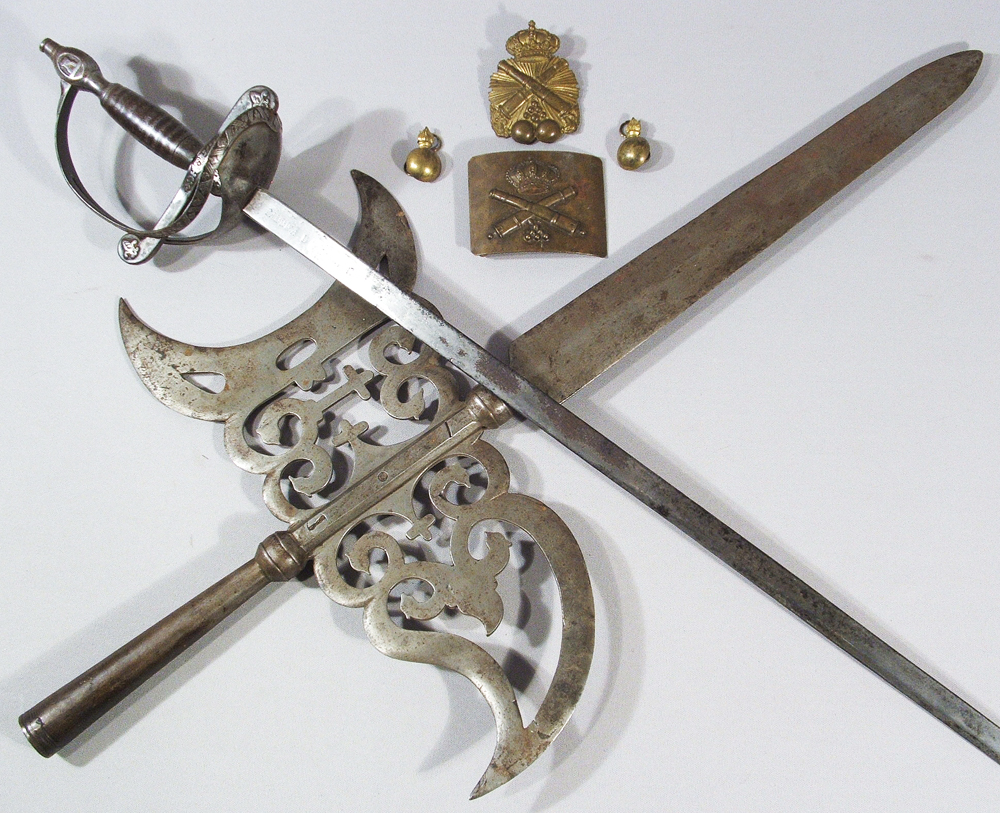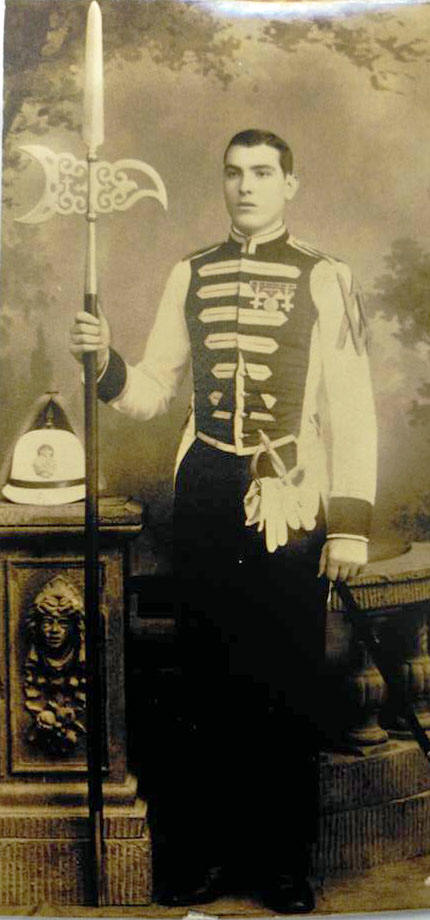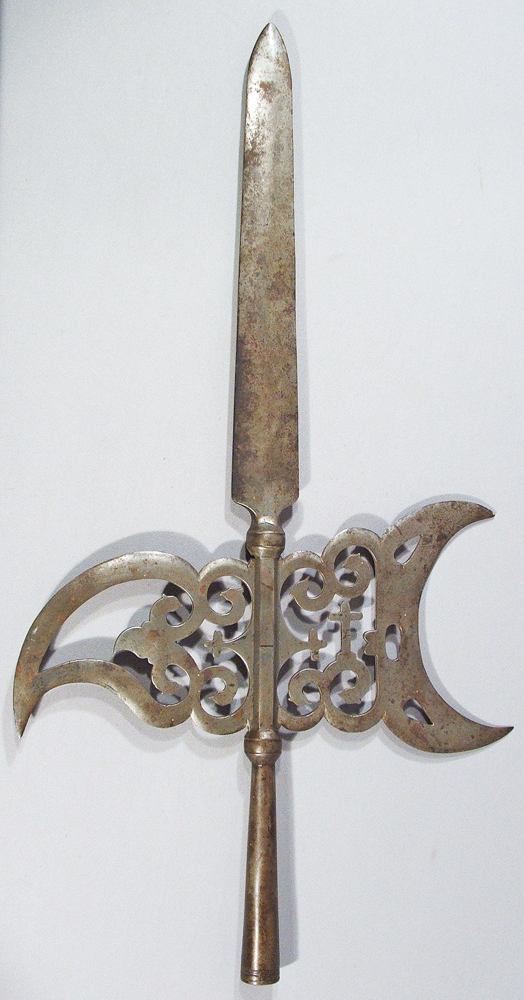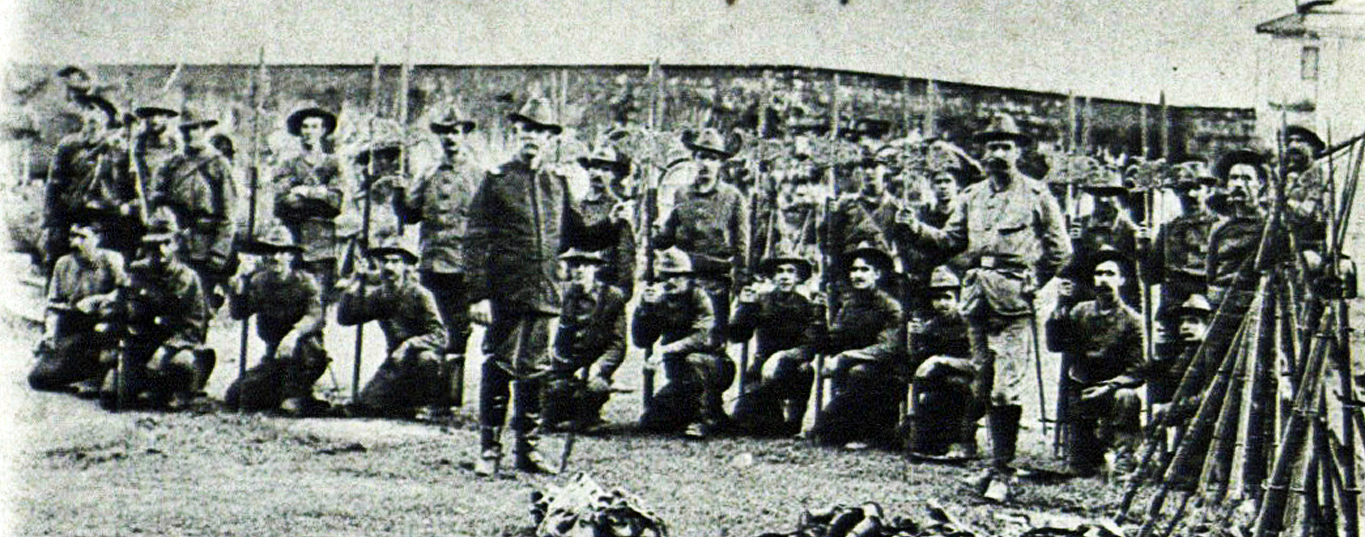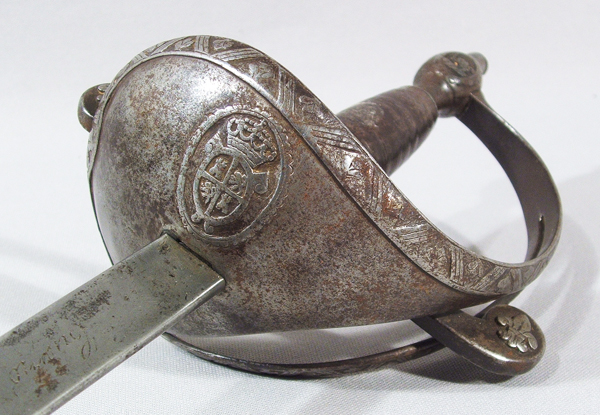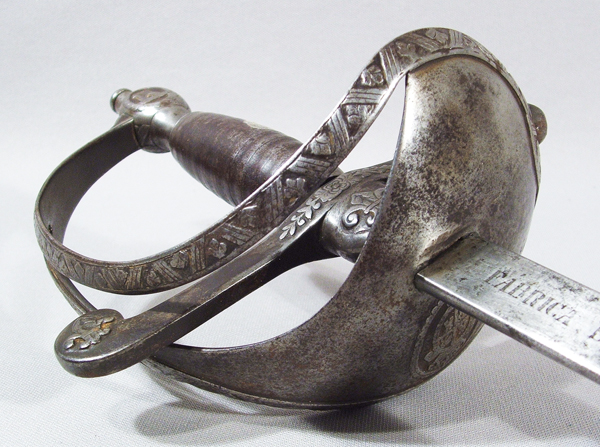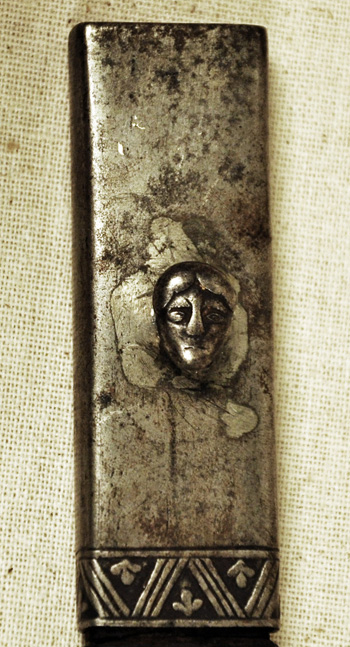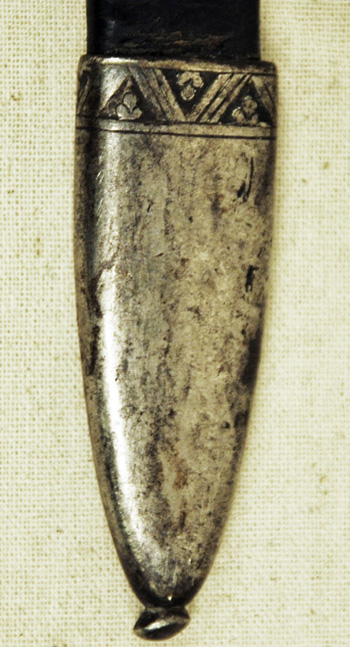|
The Captain General of the Philippines Guard Corps The Alabarderos |
||
|
NEWSLETTER: The New Tropical Telegraph WEAPONS Back to agmohio Bill Combs online showroom
|
Since 1590 the Captains General of the Philippines enjoyed the protection of a unique unit of bodyguards. Known originally as the "Guardias de Alabarderos del Real Sello", by the 19th century they were styled simply as the "Guardias del Capitan general" or the "Cuerpo de Guardias Alabarderos." Like the Spanish king's Royal Guards in Madrid and the Pope's Swiss Guard in Rome, these soldiers in Manila where one of the few units, in an age of increasingly effective modern firearms, that protected their charge armed principally with the medieval halberd and sword. While their duties were largely ceremonial, giving the Captain General's office an air of regal power, they were still expected to protect the life of the Captain General against all threats. At least two Alabaderos accompanied the Captain General at all times. This custom was continued, at least once, during the early Philippine Republic as Emilio Aguinaldo is shown in photographs at his presidential inauguration escorted by two Filipino soldiers dress in uniforms similar to those of the Alabarderos, minus the royal Spanish insignia of course, and armed with halberd-like polearms. In the 19th century, the corps underwent a turbulent period during the 1860s and was briefly disbanded in 1867. It was reorganized in 1874 with its members being drawn from the all European Regiment of Artillery. The corps size was very small, consisting of a 1st Lieutenant, a 2nd. Class Sergeant, two 1st Class Corporals, two 2nd Class Corporals and 20 soldiers. An Alabadero sergeant in service dress taken in the 1890s. The pattern of the halberd head is clearly shown and the open area of the guard on the sword is visible. The chevrons on his left sleeve are the only insignia that sets him apart from other Spanish artillerymen stationed in the Philippines. His sun helmet plate, belt plate and collar insignia are regulation pattern and similar example can be seen in the photo at the top of the page. Photo courtesy of Luis Sorando The corps wore the artillery uniform according to the Philippine regulations of 1887, the only unique distinction, other than their anachronistic weapons, was a set of gold braid chevrons, backed in red wool, placed one atop the other with one inverted to form an "XX" design.
An Alabadero wearing the gala dress uniform with white tailcoat with red facings and red vest. The color of the braid trim has not been documented. Photo courtesy of Luis Sorando
An halberd head of the particular pattern used by the Alabarderos in the Philippines. The specimen is one of two that were found in Arkansas. No other information as to provenance is known. When this pattern was adopted is not known. However, images dating between 1885 and 1898 all show this same pattern and all examples in the souvenir record are indentical. The halberd was of a distinctive design used only by this corps. The head measures 69.5 x 37 cm. The spear is double edged, the ax blade is crescent shaped on the edge and is inserted into the shaft and held with three screws. Both the blade and hook are pierced highlighting Christian cross and bird's head motifs. The socket has several decorative lines around the base. This would have been mounted on a wooden shaft with an iron base. None of the halberds examined have been maker marked and some question remains as to whether they were forged in Spain or the Philippines. A fair number of these halberds, either complete or just the head, have survived in the souvenir record. At least five are known to exist in private collections in the US, including mine shown here, the Smithsonian holds at least two, one, the souvenir of Col. Webb C. Hayes is at the Rutherford B. Hayes Presidential Museum and another is kept at the Ft. Ligonier Museum although misidentified as 18th century. Without question, there could be others of which I am not aware in the US, Spain and the Philippines. There number suggests, as does the photograph below of American soldiers holding a sizable number of captured halberds, that more of these weapons were housed at the Manila government palace armory than were needed by only 25 guards. I suspect, although it is purely speculation, that there were once no fewer than 50 but not more than 100 halberd and sword sets made. We may never know the exact numbers. Men of the regular army's 12th US Infantry pose in the Philippines with captured Spanish weapons and equipment, including about twenty halberds. While the image is not of the best quality, the pattern of the halberd heads can still be easily distinguished. The swords carried by the Alabarderos were equally unique. Designed to resemble the rapiers of the 17th century, they were a close copy of the Model 1848 Real Cuerpo de Guardias Alabarderos sword. They differ in several details from the royal guards' swords including the long cut-a-way portion of the cup guard, an elongated flat sided pommel, a noticeably smoother grip and the inscription on the blade eliminates the word "Real" or royal. The straight, single edged blade is 80.5 cm in length and made without a fuller. The obverse is marked "FÁBRICA DE TOLEDO 1863, the reverse engraved in script "Cuerpó de Guardias Alabarderos." The iron hilt has a two branch cup guard embossed with the royal arms of Spain and edged in a border of fleur-de-lys and chevrons. Fleur-de-lys are also embossed on the crossguard finials and ferrule. The pommel has a castle on the obverse and rampant lion on the reverse. The scabbard was made of black leather with iron mountings. The throat has a frog stud embossed with a mythical face and the bottom edge is engraved with a chevron and fleur-de-lys border. The drag has a matching border button finial on the tip.
Three views of the sword's hilt showing the royal crest and the open portion of the cup guard.
Details of the only known surviving scabbard shown with sword number 14. Coll. The National Infantry Museum While several of the halberds are accounted for, I know of only three swords, one in a private collection in Spain, one at The National Infantry Museum, Ft. Benning, GA, and the one picture here from my collection. All are dated "1863", the specimens in Georgia and Spain are stamped with accountability numbers "14" and "18" respectively. My sword is not numbered. Like the halberds, more are undoubtedly out there to be found. I would like to hear of any other examples of either weapon, Alabarderos images or sleeve chevrons that come to light. |
